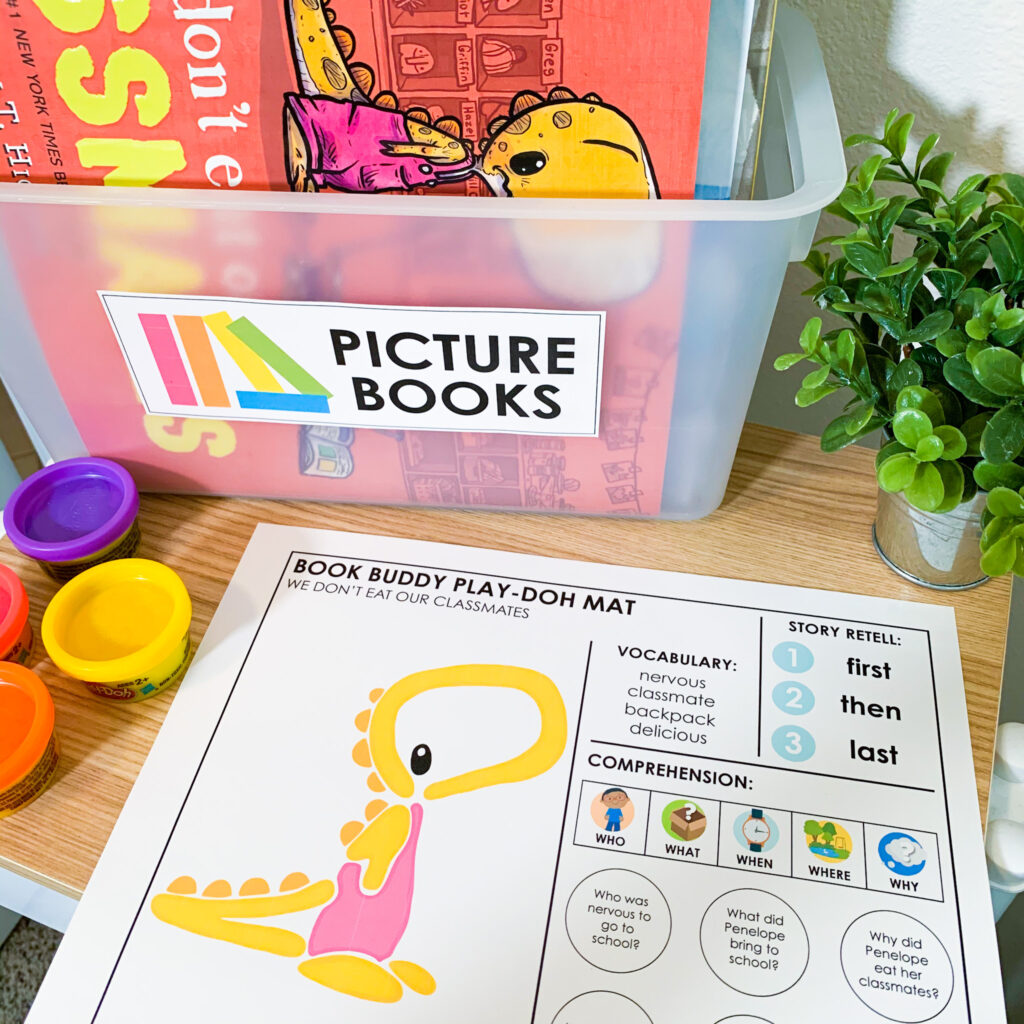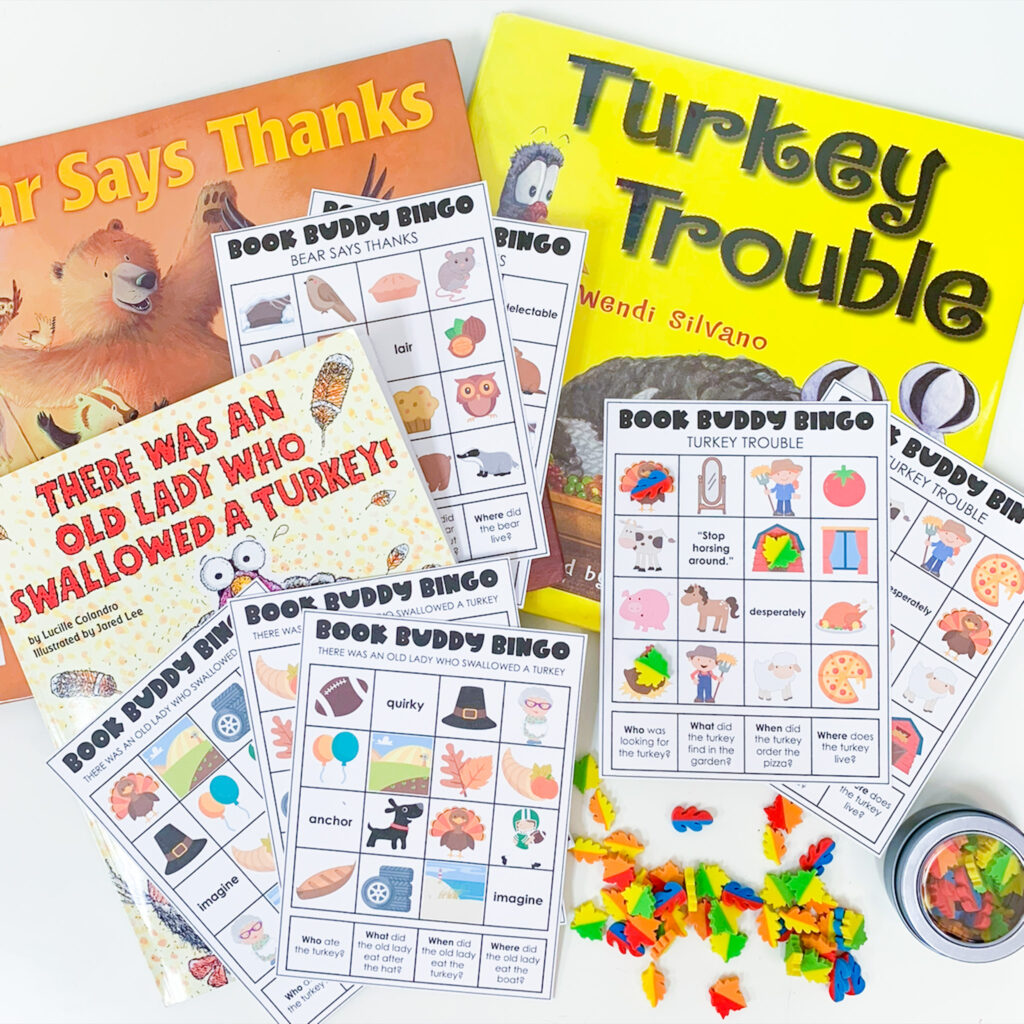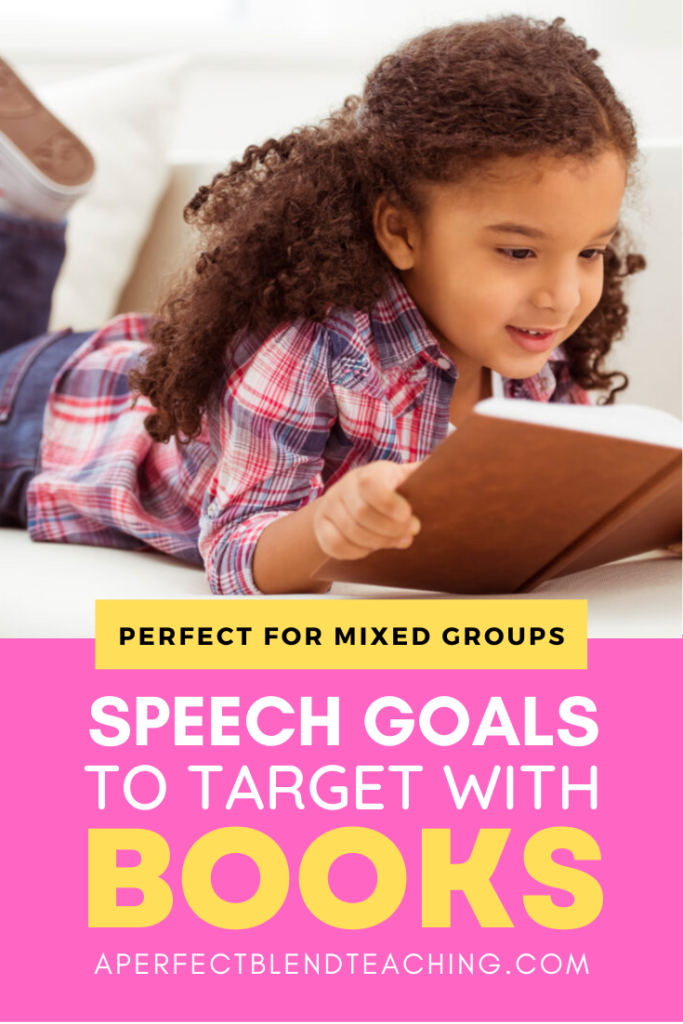One of my favorite assignments in graduate school was having to collect and analyze a language sample using a wordless book. (Had I forgotten there was such a thing as wordless books up until that point in my life? Yep. Sure did.) We then had to develop goals and a lesson plan to target areas warranting intervention. It was then I knew ANYTHING could be done with a book!

Since becoming hooked after that assignment, I have pulled countless books into speech sessions. In the midst of targeting goals, I love using animated, silly voices while reading to kids. It always feels like the “work” part of therapy becomes entertaining with books and even the most structured tasks seem effortlessly addressed!
Books are a fantastic way to work on articulation carryover (through story retell, reading, identifying words with target sounds, etc…), fluency, and anything/everything LANGUAGE related!
Here are a few speech goals to be target through books and literacy:
Making Inferences:
This happens when a person takes information from a story and knowledge they already possess about a topic to form a conclusion. Story pictures typically provide a world of information to students. Scaffolding through use of verbal and visual cues in pictures books is super helpful.
Describing:
I love just a simple prompt of “tell me about this character/place/thing” and letting students take the lead. Writing responses on a whiteboard helps encourage students to keep adding information and helps the SLP know where to guide them with prompts for additional descriptors (location, function, composition, parts, looks, category).
Answering Wh- Questions:
I never tire of hearing children’s responses to questions. Books are a wonderful tool to help children increase their ability to answer “WH” questions and step forward toward generalizing skills. The Play Dough Book Companions allow you to target comprehension and fine motor skills through a hands-on activity. The “There was an Old Lady” series includes one page story play dough mats for 10 books (with 3 versions for each book available).


Vocabulary:
A fantastic way to expand vocabulary is by introducing new words through reading books. Check out the Book Buddy Bingo resources which can be used to target vocabulary and include comprehension questions at the bottom of each bingo board. The bundle includes themes for Fall, Winter, Spring, and the “If You Give” book series.

Sequencing:
Children need to develop understanding that a story has parts and how they all fit together. Visuals are very helpful for students when determining what happens at the beginning, middle, and end of a story. For addressing story retell, check out the One Page Book Companions which contain blank spaces for students to sequence events. Other content areas these one-page book reviews target include comparing/contrasting, antonyms, multiple meaning words, analogies, and describing.
Books are a great way to cultivate a love of learning for children! I hope these suggestions and resources have provided helpful ways to target speech goals through books and literacy!
Pin the image below to revisit this blog post later!

YOU MAY ALSO LIKE:
How to Use Animated Videos to Practice Identifying Feelings in Speech Therapy: Do you use animated video clips during your sessions? Read this post to learn how to use animated videos to practice identifying feelings in speech therapy.

